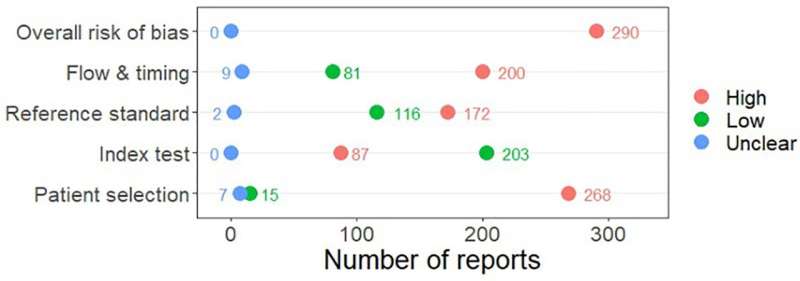
Targeted testing of individuals with a range of signs and symptoms could improve diagnosis of celiac disease, a new National Institute for Health Research (NIHR) funded study led by the University of Bristol and published in PLOS ONE has found. Signs and symptoms include family history of celiac disease, dermatitis herpetiformis, anemia, type 1 diabetes, osteoporosis and chronic liver disease.
The researchers, based at the NIHR Applied Research Collaboration (ARC) West, the University of Bristol, University of Southampton, the Royal Hospital for Sick Children, University College London and York Teaching Hospital NHS Foundation Trust, undertook an analysis of the results from 191 studies, reporting on 26 signs, symptoms and risk factors to inform their findings.
Around one in 100 people in the UK have celiac disease, where a person’s immune response to gluten attacks the tissues in their digestive system. Diagnosing the disease can be difficult. Some patients may not have symptoms, while others have non-specific symptoms such as indigestion or bloating. It’s thought only one in three people with celiac disease are actually diagnosed. The only treatment available is a gluten free diet.
Guidelines recommend that adults and children “at high risk” of celiac disease should be offered testing. However, it has not been clear until now which groups are at high enough risk to justify routine testing or which symptoms should lead to testing.
This study aimed to identify which symptoms indicate a higher risk of celiac disease, and therefore who would benefit from further testing. The researchers analyzed 191 studies, reporting on 26 potential signs, symptoms and risk factors.
The study found strong evidence that people with family history of celiac disease, dermatitis herpetiformis (a skin condition caused by a reaction to gluten ingestion), anemia, type 1 diabetes, migraines, HLA DQ2/8 risk genotype, osteoporosis, or chronic liver disease are more than twice as likely to have celiac disease than the general population. Additionally, close relatives of people with celiac disease are three times as likely to have it themselves. These signs and symptoms could therefore help identify patients who would benefit from testing.
Migraine and chronic liver disease are not yet included as a risk factor in all guidelines. The researchers suggest it may be appropriate for these to be added to guidelines.
Other signs including gastrointestinal symptoms (such as diarrhea, constipation and abdominal pain), psoriasis, epilepsy, inflammatory bowel disease, systemic lupus erythematosus, fractures, type 2 diabetes and multiple sclerosis were not shown to be reliable indicators of the disease.
Dr. Martha Elwenspoek, Research Fellow at NIHR ARC West and Bristol Medical School: Population Health Sciences (PHS), who led the study, said: “Getting a diagnosis for celiac disease is really important for people as it can be the first step in getting appropriate treatment and reducing negative effects later in life. Our study pinpoints which symptoms warrant further testing for celiac disease, which could help streamline the process of getting a diagnosis and in turn improve outcomes for those patients.”
Source: Read Full Article
